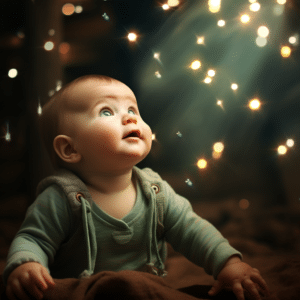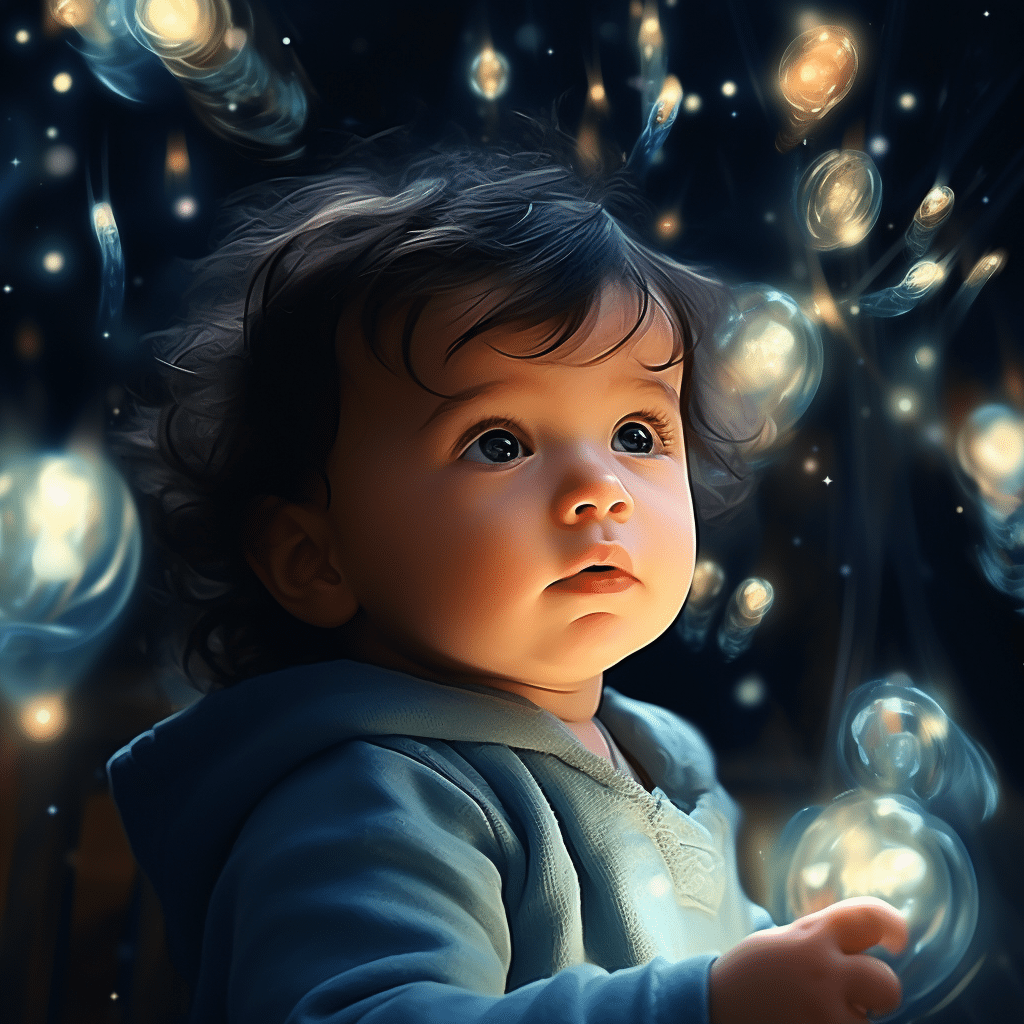Babies Staring at Lights: Vision Development and Curiosity
Babies identify their surroundings through contrasting stimuli in their early stages of life. They tend to stare at bright colors and moving objects such as parents and caregivers. It is usual for babies up to six to eight months to stare at a light.
Newborns are 50 times less sensitive to light than adults and may not be bothered by direct lights. This article elaborates on why babies stare at lights, vision development, and signs of eye problems in your baby.
Vision Development
Infants below one month have poor eyesight and see objects blurry. When below one week, they only see items in black, white, and gray. From the second week, they can see red, orange, yellow, and green objects. At this stage, they can not focus on a particular item. Between two to three months, they can shift focus from one object to another and see all colors. By the age of six to eight months, the baby’s vision has fully developed and sees objects like an adult. At this stage, you should have an ophthalmologist evaluate the baby’s sight.

Why Then Do Babies Stare At Lights?
Babies tend to stare at objects they find interesting as they explore their environment. Several reasons can make them stare;
To Discover What is Around Them
By nature, babies are curious and would wish to discover what is in their surroundings. They will look at their toys, parents, caretakers, strangers, and any other attractive object. They may want to connect a voice or sound to a person or object or just admire something such as your jewelry.
When Tired
When bored or tired, a baby will tend to stare at blank spaces, more, when they want to sleep.
To Communicate
An infant may stare at you to try and communicate. Remember, these young ones have not developed communication skills and have limited means of expressing themselves such as crying and staring. They want you to pick a clue and act.
When Something Catches Their Attention
Moving, bright objects tend to catch a baby’s attention and that’s why toys and children’s items are mostly made of bright colors.
Wakes Their Neural Connections
Lights help awake a baby’s senses, making them more alert. When you don’t want your baby to fall asleep, you can try putting them in a room with bright lights. On the flip side, dim lights when you want them to sleep fast.
Contrasting Colors
When there are two or more contrasting colors, your baby will stare at them. They could be simple objects but they fascinate babies.
Moving Objects
Any movement catches the attention of an infant who will tend to stare at the object. When you are passing around, a pet playing next to the baby, or a toy by their side attracts them.
When To Worry
Though staring at light is normal in infants, you should be on the lookout for signs of abnormalities in a child’s eyesight. In addition, you should avoid exposing a baby to UV and blue lights, they could be harmful to your child’s vision. Some of the signs to worry about are;
- If the eyes are crossed or keep on wandering randomly.
- If the eyes have a cloudy look or appear whitish.
- Eyes turn to one side constantly.
- They are over-sensitive to light.
- The eyes are misaligned.
- Lazy eyes. This is when one eye is not active and they seem not to coordinate.
- White or gray pupil.
- Presence of pus or crust in the eyes.
- When they seem watery or constantly teary.
- Drooping eyelids.
- The baby seems to have red, itchy, and discomfort.
- Excessively dry eyes.
When you see the above-highlighted signs, consider seeking medical advice early. It could help prevent loss of eyesight.
Causes Of Eye Problems
Several factors could lead to eye problems in infants including;
- Developmental or genetic issues such as autism, cataracts, and retinitis pigmentosa.
- Fetal alcohol syndrome is caused by excessive consumption of alcohol by a pregnant woman. Symptoms include blindness, visual impairment, nystagmus, and droopy eyelids.
- Infections such as toxoplasmosis, rubella, and herpes could cause inflammation and eye abnormalities in an unborn baby and might affect their sight after birth.
- Drug abuse by pregnant mothers could lead to ocular malformations such as binocular movement.
- Retinopathy of prematurity occurs in preterm babies and may affect their eyesight.
- Conjunctivitis(ophthalmia neonatorum) could be caused by viral or bacterial infection.
- Strabismus where eye muscles don’t function in coordination, that is, each eye looks at its object at the same time. There are four types of this condition; esotropia(inward turning), exotropia(outward turning), hypotropia(downward turning), and hypertropia(upward turning). Strabismus could be caused by disorders such as spina bifida, cerebral palsy, and retinoblastoma.

Tips On How To Stimulate Your Baby’s Eyesight
You can help your child stimulate their eye function by practicing these tips below;
- During pregnancy, consume foods that can improve vision such as tuna, salmon, kale, spinach, and carrots.
- Maintain a healthy lifestyle while pregnant avoiding excessive alcohol and drug use.
- Keep your baby’s room bright with contrasting colors. You could add diverse textures and shapes that are attractive to the child.
- Keep on switching items from one area to another to trigger eye movement.
- Placing moving toys in the baby’s play area.
- Allow safe play for a baby who has monitored fine motor skills.
- Walk and talk to help the baby develop coordination skills between sight and hearing.
- Have the first eye evaluation after six months. Though the baby doesn’t know how to read, an ophthalmologist will effectively evaluate them.
Babies Stare At Lights identify items through contrast stimuli in their early days of life. Staring at the light may be a way of exploring their surroundings and may help stimulate their senses. However, avoid exposing your baby to direct UV and blue lights. They could be harmful to their eyes.






